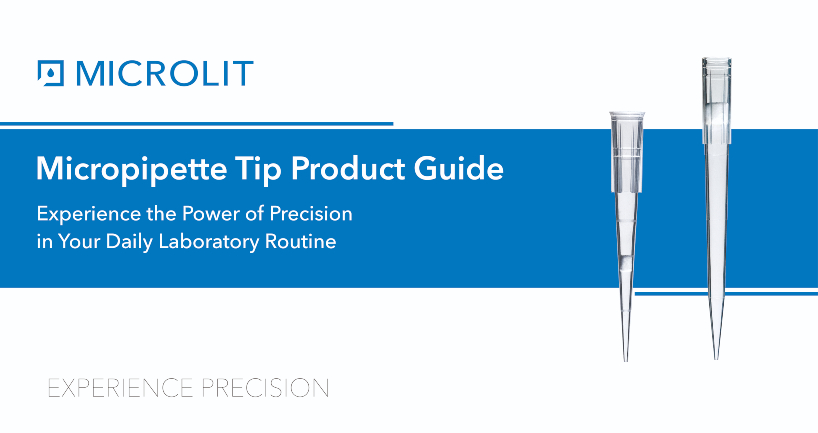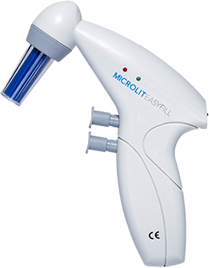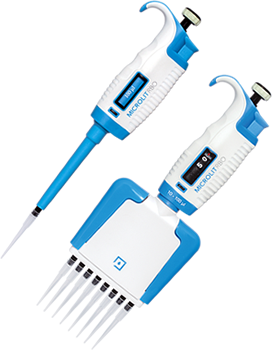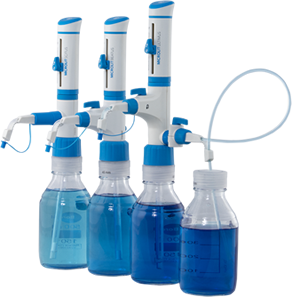What are micropipette tips?
A micropipette is a simple, yet critical scientific instrument used in labs all over the world to transfer a quantified liquid volume precisely from one container to another. Today, pipettes are available in a variety of formats ranging from simple plastic tubes to precise electronic instruments. Regardless of the type of pipette, you might have seen in a lab, one component ubiquitous to all pipettes is the pipette tip, which is a simple, plastic molded and disposable head of the equipment. In other words, a pipette is of no use without its micropipette tip!
Given its plain design, one might assume that choosing the type of pipette tip is a no-brainer. However, a variety of factors, such as ergonomics, accuracy, dimensions, ease of use, quality, application and precision need to be considered before making the purchase. Even the slightest variation in the shape of the pipette tip will make it unfit for your pipette, and negatively impact the results of the scientific study. To ensure that the process/experiment is carried out precisely, you must steer clear of poor-quality micropipette tips.
Micropipette tips are essential to any scientific laboratory, and are used across a variety of life science, chemistry, pharmaceutical, biotechnology and molecular biology applications. Given their diverse applications across various fields of research, certain quality standards have been set by regulatory bodies all over the world for quality assurance purposes. For instance, the supplier of pipettes and the compatible tips must comply with ISO 8655 standards, in addition to providing essential information related to the proper use of the equipment.
Further, the tips need to be properly sterilized for any kind of biological work. In certain studies, filters are added inside the tip to minimize contamination of the pipette’s cavity by aerosols, as well to reduce the volume of liquid retained by the surface of the tip.
History of micropipette tips – When were they first invented and how?
Pipettes are used in university labs to high-tech scientific research centers. Over the years, the instrument has undergone a variety of changes to incorporate advanced features to meet the growing requirements of modern science. Let’s take a look at the history of the evolution of pipettes and their tips.
The first pipette-like instrument commonly used in laboratories was the Pasteur pipette, named after the renowned French microbiologist Louis Pasteur, who popularized its use in the late 19th century. These early pipettes were handheld glass tubes, used primarily to transfer small volumes of liquid by suction, often with a rubber bulb. Later, the equipment was manufactured from plastic, which enabled researchers to significantly minimize contamination. In the 1950s, German physician Heinrich Schnitger created a prototype of a micropipette, which was a spring-loaded piston with a removable plastic tip. In the early 1960s, Eppendorf acquired the rights to the micropipette and started the mass production of the pipette along with other innovative laboratory tools.

In 1961, Eppendorf launched the first commercially manufactured piston-stroke pipette, in addition to the compatible tips, as well as the Eppendorf Tube.
Further, in the 1970s, Warren Gilson and professor Henry Lardy invented an adjustable micropipette, which could alter the air pressure as per the requirements of the experiment. This enabled scientists to precisely isolate and transfer smaller liquid volumes.
Fast forward to this day, pipettes come with highly advanced features, such as Bluetooth connectivity and automatic/robotic pipette systems. Such systems come with specialized micropipette tips, which are only compatible with advanced and high-end pipettes.
In addition, low-retention, hydrophobic and sterile tips are becoming increasingly popular due to the evolving research standards. Such tips are manufactured using specialized raw materials and advanced tools/protocols which guarantee the sterility and quality of the tips.
How are pipette tips manufactured?
Manufacturing of critical medical equipment, including pipettes and its tips requires high-grade hygiene conditions to minimize the risk of any type of contamination. In addition, it is critical that product quality is not compromised at the cost of maintaining productivity. In today’s technology-driven world, highly sophisticated manufacturing machinery is deployed to produce premium-quality micropipette tips.
With processing methods becoming highly sensitive over the years, manufacturing protocols and requirements for pipette tips have also evolved substantially. For instance, polypropylene used in the manufacturing of these tips has undergone several changes in the last few years. In order to develop low-retention and sterile tips, manufacturers ensure that the material is free from additives, such as di (2- hydroxyethyl) methyl dodecyl ammonium (DiHEMDA) and 9-octadecenamide (oleamide). In addition, given the rising research benchmarks, the tools used in the process, as well as the quality tests carried out, have been improved drastically by applying automation and other innovative technologies. Manufacturers ensure that only highly polished equipment is used in the production process, in order to eliminate any parting agents or demolding aids.
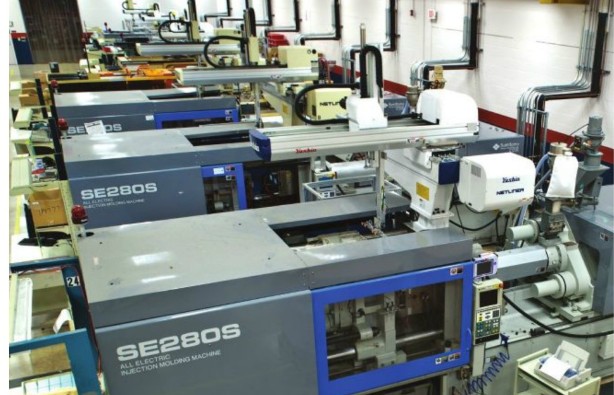
The process of manufacturing a pipette tip might vary from one manufacturer to another, however, the basic principles remain largely the same. The process of manufacturing a plastic pipette tip having a long capillary at the front comprises of the following steps:
- Injection molding of a pipette tip in a mold.
- Opening of the mold and drawing the plastic section into a capillary.
- The unsolidified plastic section is selectively heated.
- The tip is drawn vertically, and the tip is shaped using a molding element.
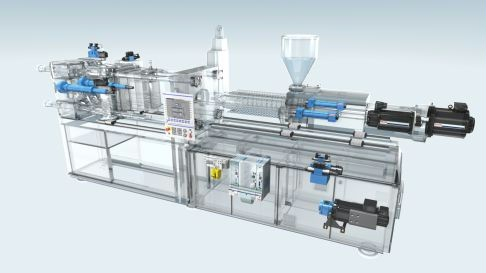
Mass production of micropipette tips is done using high-performance electric injection molding machines. The process is usually automated in order to achieve high efficiency.
Manufacturers usually produce both individual parts and end products in-house to control the overall quality and safety of micropipette tips. In addition, to eliminate the risk of contamination, manufacturers use state-of-the-art HEPA filters, which are installed in cleanroom facilities.
A clean room is generally monitored for a variety of parameters, including measurement of air particulates, air exchange rate, room temperature, humidity, and positive air pressure, among others. In addition, the lab personnel ensures that deviations in any of the above parameters are detected as soon as possible, and appropriate measures are taken before the deviation values exceed the permissible limit. In order to maintain a higher degree of stability in manufacturing conditions, it is important to have a high-precision control of the aforementioned factors. Class 8, 7, and 5 cleanrooms are usually used, which are validated according to ISO 14 644-1 standard.
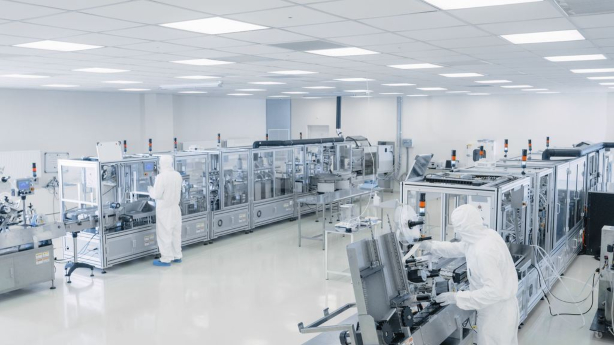
Lastly, the manufacturers oversee that the final product undergoes stringent quality testing in order to have high-grade pipette tips. In addition, manufacturers are striving to install purpose-driven facilities, which are flexible and designed to carry out continuous processes. Manufacturing high-quality pipettes and tips is a complex process that requires rigorous planning and forecasting, sourcing of quality raw materials and state-of-the-art manufacturing protocols/tools. Manufacturers usually follow compliance with ISO 14 644-1 standard for manufacturing disposable labware.
What are the different types of micropipette tips?
1. Filter vs Non-Filter
- Filter Tips:
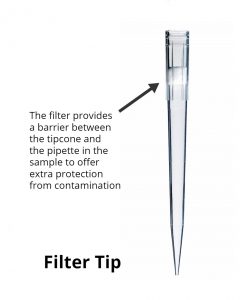 Filter tips are generally meant for use in specific kinds of tests. For instance, if the sample is corrosive or volatile or highly viscous in nature, it can potentially damage the pipette. In such cases, filter tips are recommended for use. The filter placed inside these tips would help prevent the chances of excess aspiration of the sample, which is responsible for inducing damage to the pipette shaft. Every time you aspirate liquid, aerosols are generated inside the pipette tip. If you don’t use filter tips, these aerosols are likely to contaminate your pipette and the subsequent samples. A filter pipette is also recommended for novice lab technicians or university students, who lack the requisite experience of handling pipettes. They can be used for training purposes as filter pipette tips protect against potential damage or contamination of samples, and therefore, prove to be highly cost-effective.
Filter tips are generally meant for use in specific kinds of tests. For instance, if the sample is corrosive or volatile or highly viscous in nature, it can potentially damage the pipette. In such cases, filter tips are recommended for use. The filter placed inside these tips would help prevent the chances of excess aspiration of the sample, which is responsible for inducing damage to the pipette shaft. Every time you aspirate liquid, aerosols are generated inside the pipette tip. If you don’t use filter tips, these aerosols are likely to contaminate your pipette and the subsequent samples. A filter pipette is also recommended for novice lab technicians or university students, who lack the requisite experience of handling pipettes. They can be used for training purposes as filter pipette tips protect against potential damage or contamination of samples, and therefore, prove to be highly cost-effective.
- Non-filter Tips:
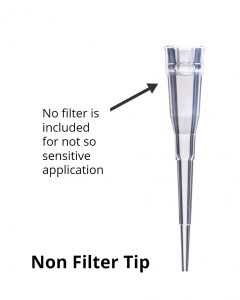 Non-filter tips are the major type of tips used in any lab as they are less expensive than filter tips. Non-filter tips lack the advantages associated with filter tips, therefore, are more suitable for samples that are not susceptible to contamination, and that is unlikely to damage the pipette. In addition, these non-filter tips can be used by people who have a significant amount of experience handling pipettes in the lab. Moreover, one can use non-filter pipette tips for relatively non-sensitive applications, such as isolating plasmid DNA, and loading agarose gels, among others.
Non-filter tips are the major type of tips used in any lab as they are less expensive than filter tips. Non-filter tips lack the advantages associated with filter tips, therefore, are more suitable for samples that are not susceptible to contamination, and that is unlikely to damage the pipette. In addition, these non-filter tips can be used by people who have a significant amount of experience handling pipettes in the lab. Moreover, one can use non-filter pipette tips for relatively non-sensitive applications, such as isolating plasmid DNA, and loading agarose gels, among others.
2. By Packaging
- Racked: Today, micropipette tips are primarily available as pre-filled stackable racks, usually made of polypropylene. As the micropipette tips are well-stacked, they don’t require to be manually emptied in a sterile container. The racks are sturdy, having thick walls, and usually come with a transparent lid and base. Once emptied, the racks are reusable.
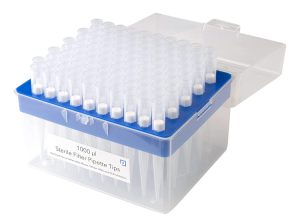
- Bulk: Bulk tips are usually packed in zip-locked resealable polyethylene bags. The zip-lock sealing offers superior protection against contamination. After you receive your bulk package, you can manually empty your pipette tips in a sterile box.
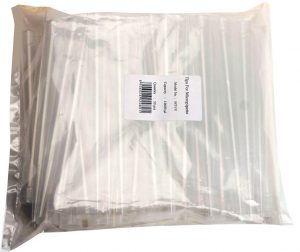
- Reloads: Reload packaging is similar to racked tips, however, it is much more sustainable and environment-friendly as the same box can be used with replaceable reloads. It generally comes with a unique nestable design, making it a compact and contamination-free option.
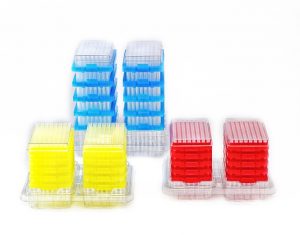
- Individually Wrapped: Individually wrapped pipette tips are used in studies requiring highly stringent aseptic conditions. The single-wrap packaged tips are used across a variety of sensitive applications to ensure sterility and safety. Such type of packaging is free from endotoxins, or any other biological contaminants, thereby possessing the utmost sterility standards.
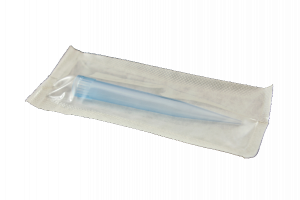
3. Low Retention vs. Non-Low Retention
Low-retention tips can be manufactured using a variety of techniques. For instance, in one of the manufacturing processes, the tips are mechanically polished with the help of a diamond abrasive to render them extremely smooth. This prevents liquid samples from sticking to the tip surface.
Additionally, some manufacturers use plastic additives or surface-modifying chemicals to alter the properties of the polymer. These chemicals are either added to the polymer material or are coated onto the plastic surface. However, the latter technique poses a risk of leaching of chemicals into the solution, which, in turn, can cause contamination of the sample. Further, the coating process might lead to uneven coverage of the chemical on the tip’s surface. This can result in inconsistent pipetting results.
Given the high demand of low-retention tips, various manufacturers are using innovative technologies to design completely hydrophobic tips, that have high degree of chemical resistance, as well as consistent quality.
- How are they manufactured? Surface Treatment
Low-retention tips can be manufactured using a variety of techniques. For instance, in one of the manufacturing processes, the tips are mechanically polished with the help of a diamond abrasive to render them extremely smooth. This prevents liquid samples from sticking to the tip surface.
Additionally, some manufacturers use plastic additives or surface-modifying chemicals to alter the properties of the polymer. These chemicals are either added into the polymer material or are coated onto the plastic surface. However, the latter technique poses a risk of leaching of chemicals into the solution, which, in turn, can cause contamination of the sample. Further, the coating process might lead to uneven coverage of the chemical on the tip’s surface. This can result in inconsistent pipetting results.
Given the high demand for low-retention tips, various manufacturers are using innovative technologies to design completely hydrophobic tips, that have a high degree of chemical resistance, as well as consistent quality.
4. Sterile vs. Non-Sterile
Sterile tips are gamma-radiated, which are free from biological contaminants, such as RNase / DNase, human DNA, and pyrogens. They find application across highly-sensitive assays, which require a high degree of sterility.
Is it possible for someone to buy non-sterile tips, and use them post autoclaving them? Autoclaving might eliminate the risk of contamination caused by living organisms, but this does not necessarily mean that the tips would be free of RNase and DNase.
5. By Dimensions
- Macro Tips: These tips are primarily used for carrying out pipetting of large liquid volumes safely and efficiently. Macro tips are able to handle reagents in a volume ranging from 5 ml to 10 ml.
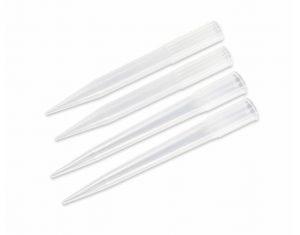
- Micro Tips: Micro tips are used to transfer relatively smaller liquid volumes, mostly in the range of 0.5 ul to 1,250 μl.
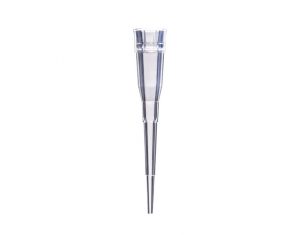
- Ultra-Micro Tips: Ultra micropipette tips are available for use in pipettors of the size range 0.5-20 μL.
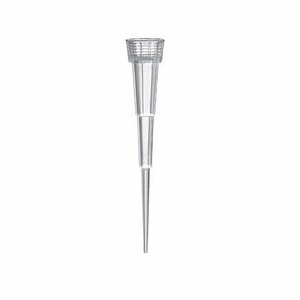
Wide Orifice: As the name suggests, these pipettes are designed with a larger tip orifice. This characteristic is particularly useful for eliminating cell shearing and flow resistance. With an orifice almost 70% greater than a standard pipette tip, these tips offer significant flexibility required for handling difficult-to-pipette samples, such as fragile cell lines, genomic DNA, macrophages, hepatocytes, hybridomas and other highly viscous liquids. These samples are not suitable to be transferred through a standard tip’s orifice as they are subjected to mechanical shearing force, which can lead to fragmentation to the cells in the pipette. Therefore, wide orifice tips are instrumental in ensuring cell viability and plating capability.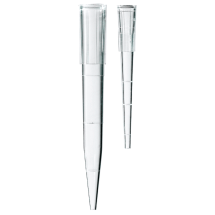
6. Short vs. Extended Length
- Short Tips: Short tips are used to fill small wells, for instance, while pipetting in a 384 or 1,536 well-plate. In addition, they offer better ergonomic properties as they enable you to pipette closer to the bench, thereby, minimizing arm strain.
- Extended Length Tips: Micropipette tips having extended lengths offer significant contamination control as they enable you to reach to the bottom of the vessel, thereby reducing contact of the container with the pipette shaft. These tips are better than standard tips and are suitable for labware, including microcentrifuge tubes or deep good blocks.
Beveled Tips: A beveled orifice prevents adherence of the sample to the tip, and makes it easier to pipette every drop of the sample entirely. In the process of gel loading, a beveled tip is useful in preventing accidental damage of the gel. Beveled tips are also useful for accurate fluid transfer as they usually have graduation marks.
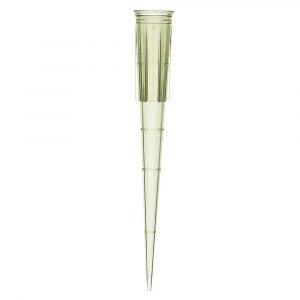
Round and Flat Tips: Flat and round tips enable easy access into vertical and horizontal electrophoresis gels. Flat tips are used primarily for loading acrylamide and agarose gels in the process of gel electrophoresis, whereas round tips are better suited for loading SDS PAGE and agarose gels.
7. By Special Applications
- Gel Loading: Loading acrylamide or agarose gels with standard pipette tips is a cumbersome process, and can lead to significant pipetting errors. Usually, round tips are used for loading agarose gels, and ultra round / flat tips are used for polyacrylamide gels.
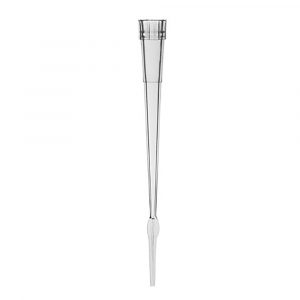
- Blood samples: Blood and plasma comprise of proteins that pose the risk of wetting the surface of a pipette tip, thereby causing foaming. This makes the process of pipetting very time-consuming and can cause contamination, specifically in point-of-care diagnostics applications. Therefore, for such purposes, a wide orifice tip is generally used.
- Positive Displacement Pipette Tips: In such pipettes, there is direct contact of the piston with the sample without any air cushion. The disposable piston is part of the tip, and not exactly integrated in the pipette. Therefore, it is recommended for difficult-to-handle samples (viscous, volatile, corrosive, dense, radioactive, extremely hot/cold).
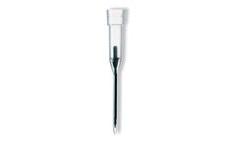
- Repeater Pipette Tips: Repeater pipettes enable the user to easily perform a number of repetitive dispensing cycles. Repeater pipette provides reliable ergonomics without compromising on precision. Pipette tips used for such pipettes are reliable and maintenance-free with a robust design, so as to endure the mechanical burden imposed by repeated pipetting. The tips are manufactured using high-quality virgin plastics, and without any chemical additives in order to prevent any type of contamination.
Robotic Pipette Tips: Tips for automated workstations are subject to stricter tolerances than standard pipette tips. Robotic pipette tips can be implemented with automatic liquid-handling workstations. Some tips may be designed for specific robotic systems and robotic tips are regulated under tighter tolerances compared to handheld pipettes.
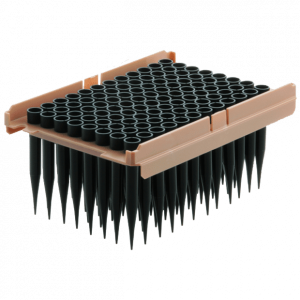
What are some important features of pipette tips?
- Hydrophobic: Hydrophobic pipette tips prevent the contact of aerosol contaminants with the pipette shaft. Therefore, such kinds of tips are best suited for applications requiring a high degree of sterility, including radioisotope handling and DNA amplification. In such tips, a unique polypropylene blend is used as a mold having distinguished hydrophobic characteristics. This allows liquids with low surface tension from spreading and making the inner surface of the tips wet, allowing all the samples to pipette out of the tip.
- Such tip properties maximize the extent of the sample recovered from the pipette, thus improving the precision of pipetting detergent-containing solutions, or any other fluids having low surface tension. Further, such tips offer superior chemical resistance without the risk of leachable. They find application in highly sensitive biological studies, involving the use of viscous reagents and/or detergents. Such applications include sequencing, PCR and RT-PCR, protein analysis/purification experiments, SDS-PAGE and others.
- Purity: A good-quality pipette tip is free of detectable DNase, RNase, PCB Inhibitors, pyrogens and other types of bio-burden / biological contamination. Pipette tips need to undergo a sterilization process in order to eliminate the risk of contamination by living organisms. Generally, this is achieved by using radiation. However, radiation alone can’t ensure that the pipette tip is completely sterile and free from endotoxins or nucleic acids. For a variety of biological assays, it is absolutely critical that the equipment is pure and sterile. Needless to say, a manufacturer offering high-quality pipette tips would follow cleanliness protocols during production, and make sure that the bulk packaging lacks any type of contamination.
- Graduated: As the name suggests, graduated tips have markings on the side for measuring different liquid volumes. These tips act as a reliable secondary scale and ensure that the volume of liquid is absolutely correct.
- Autoclavable: Autoclaving is a process used to sterilize lab equipment, such as pipette tips. Sterilization is achieved by passing superheated steam through the labware. This is done by removal of air, either with the help of an evacuation pump or downward steam displacement. Certain types of pipette tips available in the market are autoclave-compatible, while others are not. These tips are manufactured using materials resistant to autoclaving. However, most companies lay out stringent procedures that need to be followed in the autoclaving process (121°C, 20 minutes). However, at times, autoclaving is rendered ineffective in the elimination of certain high temperature-resistance microorganisms, or enzyme proteins, such as RNase which are difficult to get inactivated even when exposed to high temperatures.
What are universal fit tips?
Universal tips are designed so as to fit a variety of popular brands of pipettors. Although you can always opt for the pipette tips manufactured by the manufacturer of the pipette, high-quality universal tips can always be your go-to option, if the specific tips are unavailable.
These tips are designed to attach securely around a variety of pipette barrels, which might differ only slightly in radius. However, not every universal tip is the same as the others, therefore, it’s important to assess the available choices.
Companies manufacturing universal tips specifically need to closely evaluate various problems that can lead to fit issues. For instance, certain manufacturers’ design tips are flexible at the proximal end. This makes the tip fit a variety of pipettes, offering greater precision and accuracy. Universal tips are usually available in a variety of features, such as hydrophobic, graduated, filtered and sterile.
How to select compatible tips for your pipette?
The first and foremost characteristic important to selecting a pipette tip is the polypropylene blend of the tip. Generally, high-quality tips are made using virgin polypropylene material. This polymer is free from metal / plastic additives that are potential contaminants for your samples. Especially for colored tips, it’s necessary that the manufacturer is not using metal additives as such additives are often added in the dyes used in the coloring process of these tips.
The second factor to consider while choosing your ideal pipette tip is the quality and type of injection molding machine used in the manufacturing process. Even the slightest variation, such as molding flash or streaking can negatively impact the accuracy of the study results. Such deviations are often hard to spot through the naked eye, therefore it is important not to buy cheaper pipette tips available in the market, as they can completely ruin the outcome of your scientific study.
Further, it’s important to look at the fit of the pipette. It’s always a good idea to buy the tips marketed by the original manufacturer of the pipette, however, one can always opt for universal fit tips, which are readily available in the market nowadays. The fit is probably the most important factor while making the purchase as poorly fitting tips can severely affect the reliability of the study results. Buying a poorly-fitting tip would probably lead to a significant waste of your valuable money and time.
Microlit Low Retention Pipette Tips
Microlit Low Retention Micropipette Tips provide assured accuracy and precision as they are significantly more hydrophobic than standard pipette tips. These pipette tips are available in both micro and macro in standard (non-filtered, non-sterile) with different packaging. These Micropipette Filter Tips are widely used for Covid Testing as well.
There are some features of Microlit Low Retention Pipette Tips are given below:
- Manufacturer Recommended – Excellent compatibility with Microlit RBO and Microlit NERO.
- More hydrophobic than standard micropipette tips, facilitating exceptionally clean release.
- Certified free of detectable RNase, DNase, DNA, PCB Inhibitors, and pyrogen-free pipettor tips.
- Comprehensive Range – Available in Micro (up to 1000µl) and Macro (up to 10ml) models.
- Available in racked, reloads, and bulk packaging.
- Filter Tips Racked, and Filter Tips Bulk being extensively used for Covid testing available in stock.
| Model No. | Volume Range (ul) | MOQ |
| R-10-NS | ProTip™ 10µl Low Retention, Racked, Non-Sterile Tips | 1 Pack of 10 Racks/960 Tips |
| R-200-NS | ProTip™ 200µl Low Retention, Racked, Non-Sterile Tips | 1 Pack of 10 Racks/960 Tips |
| R-1000-NS | ProTip™ 1000µl Low Retention, Racked, Non-Sterile Tips | 1 Pack of 10 Racks/960 Tips |
| R-5000-NS | ProTip™ 5ml Low Retention, Racked, Non-Sterile Tips | 1 Unit of 1 Rack/96 Tips |
| R-10000-NS | ProTip™ 10ml Low Retention, Racked, Non-Sterile Tips | 1 Rack of 25 Tips |
| R-10-FS | ProTip™ 10µl Low Retention Filter, Racked, Sterile Tips | 1 Pack of 10 Racks/960 Tips |
| R-200-FS | ProTip™ 200µl Low Retention, Racked, Sterile, Filter Tips | 1 Pack of 10 Racks/960 Tips |
| R-1000-FS | ProTip™ 1000µl Low Retention, Racked, Sterile Filter Tips | 1 Pack of 10 Racks/960 Tips |
| B-10-NS | ProTip™ 10µl Tips, Low Retention Clear, Graduated, Bulk | 1 Pack of 1000 Tips |
| B-200-NS | ProTip™ 200µl Tips, Clear, Low Retention, Graduated, Bulk | 1 Pack of 1000 Tips |
| B-1000-NS-L | ProTip™ 1000µl Tips, Clear, Low Retention, Graduated, Bulk | 1 Pack of 1000 Tips |
| B-5000-NS | ProTip™ 5ml Clear Tips, Bulk | 1 Unit of 250 Tips |
| B-10000-NS | ProTip™ 10ml Clear Tips, Bulk | 1 Unit of 200 Tips |
To know more about Microlit Low Retention Pipette Tips or to order this product, visit https://www.microlit.us/product-category/micropipette-tips/
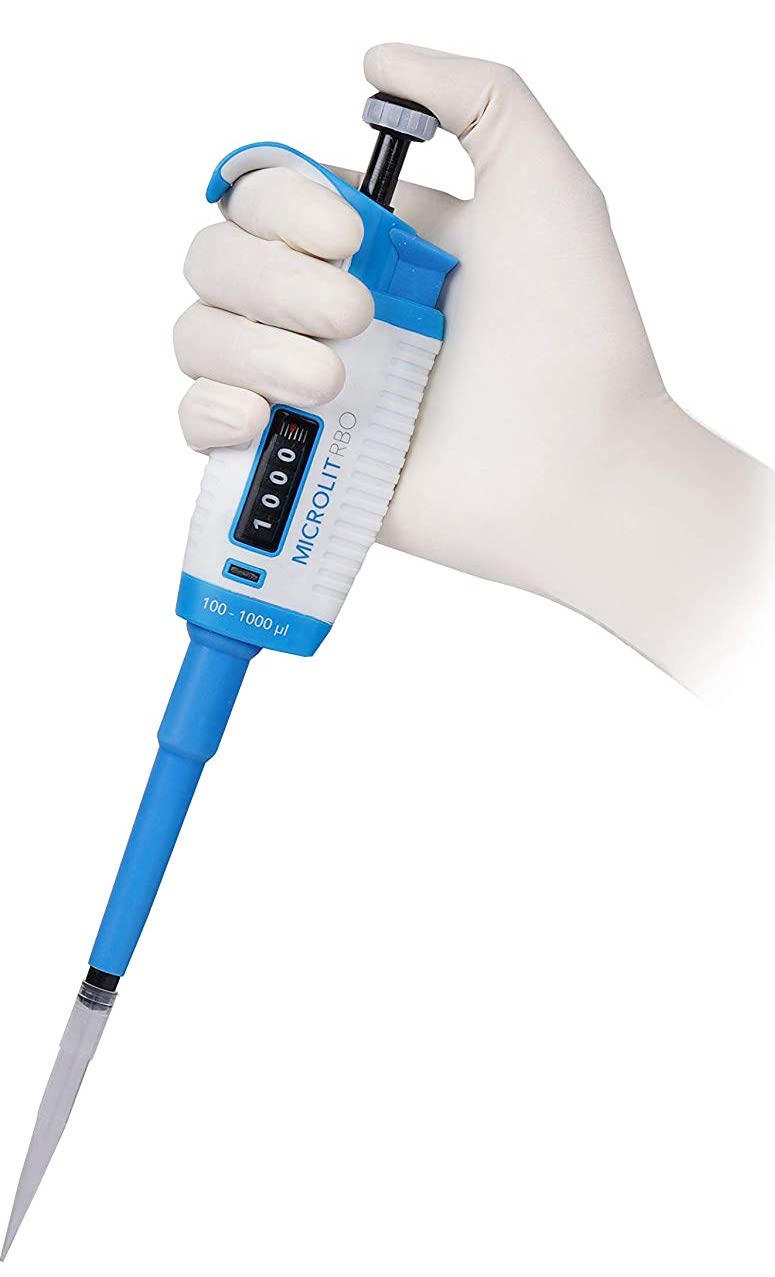





 20933
20933